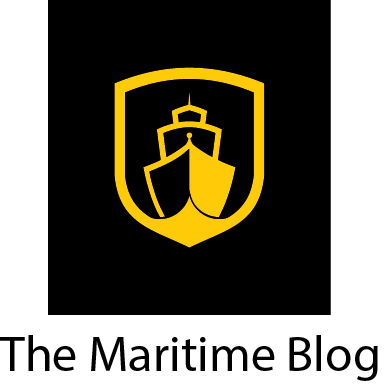
Tug and Barge Solutions – “If you’re going to color code the engine room, this is a good start!” on Facebook via Duke Wavewalker

- Ferries of Finland on Wikipedia
- Images above via Maritime Timetable Images; Finland Steamship (more)
- Finland Steamship Co on Simplon UK
- Images: Finland SS Co and Silja Line postcards

Erik Nitsche (1908 – 1998) was a pioneer in the design of books, annual reports, and other printed material that relied on meticulous attention to detail and the elegance of simple type. Nitsche was born and studied in Lausanne, Switzerland, and moved to the United States at the age of 26, where he had a successful career as graphic designer and art director.
Nitsche is best known for his historic relationship with the engineering company General Dynamics. He designed a breakthrough series of posters, in addition to designing their corporate image, annual reports, and advertising. After the 1960’s he worked mainly on children’s books. (wikipedia)
above rt: History of Ships and Seafaring (dustjacket) First Edition, 1963, Hawthorn Books, Volume 2 in The New Illustrated Library of Science and Invention (1963)
- Erik Nitsche Design Archive on Flickr
- Bringing the Atom into the American Homes: Erik Nitsche illustrations for General Dynamics

Bronze Age shipyard discovered on Dana Island
It’s believed that 274 ships could be crafted at one time, making it by far the largest ancient shipyard ever discovered. keep reading

Construction Of The Massive Battleship “Mighty Mo” in 25 Stunning Pictures
War History Online – BB-63, the USS Missouri “Mighty Mo” is an Iowa-class United States Navy Battleship, the third that was named in honor of the US state of Missouri. She was also the last battleship ever to be commissioned by the United States. Most notable in her history, on the Missouri the Japanese Empire formally surrendered ending World War II. keep reading


Fort Mifflin (1772-1962; originally called Fort Island Battery) – A Revolutionary War Coastal Fort first established as Mud Island Fort in 1772 on the Schuykill River, below Philadelphia on Mud Island, Philadelphia County, Pennsylvania. more
From 1876 to 1884, the Philadelphia District Office of the Corps of Engineers took custodial responsibility of Fort Mifflin. During the Second World War, the Army stationed anti-aircraft guns at old Fort Mifflin to defend the nearby Fort Mifflin Naval Ammunition Storage Depot (NASD) and the United States Philadelphia Naval Shipyard.
The army decommissioned Fort Mifflin for active duty infantry and artillery in 1962, returning the older portion of the fort to the City of Philadelphia. A portion of the fort’s grounds are still actively used by the United States Army Corp of Engineers, making it the oldest fort in military use (the only base in use that pre-dates the Declaration of Independence) in the United States. Fort Mifflin on wikipedia
More History of Philadelphia Area Forts and Fortifications

via Mary A Whalen Facebook page:
Trump’s executive order regarding refugees has prompted a Canadian to ask us how a major NYC refugee story, that is significant in Canada, is regarded here.
It was described as “the most important event in New York Harbor…the massive refugee crisis right after the British defeat at Yorktown. The last city they held was NY. 100,000 loyalists were forced to flee this country. Ships from all over the Atlantic came to take the refugees. Most were taken to Canada. They went to Nova Scotia and were deposited in a barren place that soon became one of the largest British city’s in the hemisphere. [Blacks who had been “liberated” by the Brits and fought with them fled that way] despite a provision in the peace treaty that barred the British from evacuating them. It also changed Canada profoundly.”
Red Hook WaterStories has some information on how blacks who fought for the redcoats went to Canada, but no more. Anyone have history on this? The Wikipedia page for the anniversary “evacuation day” has some colorful history; but as is often the case, the maritime story is absent.
see Evacuation Day (New York) on wikipedia


HMS Jersey (1736) 60-gun fourth rate ship of the line of the Royal Navy at Plymouth Dockyard, launched on 14 June 1736.
The Horror of the British Prison Ships of New York City Comes to an End
More Americans died in British jails and prison ships in New York Harbor than in all the battles of the American Revolutionary War.The British quickly disposed of the bodies of the dead from the jails and ships by quick interment or throwing the bodies overboard. Following the end of the American Revolutionary War in 1783, the remains of those who died on the 16 prison ships were neglected, left to lie along the Brooklyn shore on Wallabout Bay…”

You Can Apply Now to Be an Apprentice Globe Maker in London
 If you have a steady hand, an eye for detail, and a love of latitude and longitude, Bellerby and Co. would like to hear from you. The London-based company is one of the world’s few remaining traditional globe-makers, and they’re looking to take on an apprentice.
If you have a steady hand, an eye for detail, and a love of latitude and longitude, Bellerby and Co. would like to hear from you. The London-based company is one of the world’s few remaining traditional globe-makers, and they’re looking to take on an apprentice.
It’s not going to be easy. Applicants should be prepared for a long training period. Everyone at Bellerby starts out as an apprentice, and it takes at least six months to learn to make the smallest and simplest globes; years to make the bigger ones. keep reading


Smithsonian: The Story of the Astrolabe, the Original Smartphone
Imagine a device that can do everything: Give you the time, your location, your horoscope, and even help you make decisions—all with the swipe of a hand. It’s overpriced, customizable and comes with a variety of bells and whistles. No, this isn’t the iPhone 7. It’s the astrolabe, a remarkably versatile tool that was used for centuries in European and Islamic cultures. keep reading
While the astrolabe is effective for determining latitude on land or calm seas, it is less reliable on the heaving deck of a ship in rough seas. The mariner’s astrolabe was developed to solve that problem. The Corpus Christi Museum of Science and History in Texas, United States, contains the world’s oldest mariner’s astrolabe with a confirmed date of 1554, salvaged from the wreck of the San Esteban.


Scientists Describe Ancient Bag-Like Sea Creatures From China
When scientists like Simon Conway Morris discover a new animal, they get to name it. He and his colleagues in China don’t seem to give compliments where they aren’t deserved.
“We arrived at the word Saccorhytus, which basically means ‘wrinkled bag’,” says Conway Morris, a paleobiologist at the University of Cambridge in the U.K. Listen on NPR



USCoastGuardNortheast – 25 January 1940; The #OceanStation program was formally established under orders from President Franklin Roosevelt. The U.S. Coast Guard, in cooperation with the U.S. National Weather Service (NWS), was given responsibility for its establishment and operation.
The program was first known as the Atlantic Weather Observation Service and later by thousands of Coast Guardsmen who served after World War II as the “Ocean Station” (OS) program. Cutters were dispatched for 30-day patrols to transmit weather observations and serve as a SAR standby for transoceanic aircraft. The program ended in the 1970s.

The idea of a stationary weather ship was proposed as early as 1921 by Météo-France to help support shipping and the coming of transatlantic aviation.
A weather ship, or Ocean Station Vessel, was a ship stationed in the ocean as a platform for surface and upper air meteorological observations for use in weather forecasting. They were primarily located in the north Atlantic and north Pacific oceans, reporting via radio. In addition to their weather reporting function, these vessels aided in search and rescue operations, supported transatlantic flights, acted as research platforms for oceanographers, monitored marine pollution, and aided in weather forecasting.
Beginning in the 1970s, their role was largely superseded by weather buoys due to the ships’ significant cost. The last weather ship was Polarfront, known as weather station M (“Mike”), which was removed from operation on January 1, 2010. more

Sunday Ship History: Ocean Weather Ships on EagleSpeak

The main deck of the Mary A Whalen (historic tanker; Portside New York) is clear thanks to hero shovelers Ahmed ElHusseiny, Maria Del Carmen Clegg, Matthew Thomas Perricone! (Mary A Whalen via Facebook) Hope you saved their phone numbers, Carolina!





















